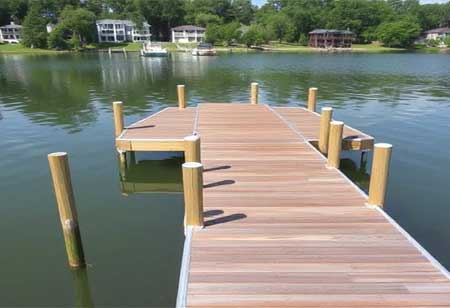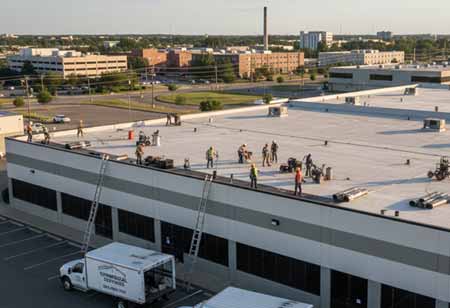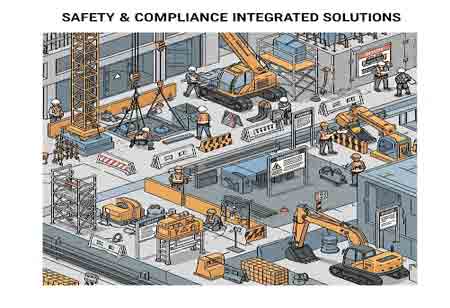Thank you for Subscribing to Construction Business Review Weekly Brief
Specials
- Apartment and Condominium Contractors Canada
- Decking Canada
- Architectural Glass Europe
- MEP APAC
- Construction Saudi Arabia
- German Apartment and Condominium Contractors
- Construction Law APAC
- Outdoor Construction
- Foundation Construction Canada
- MEP Canada
- Kitchen and Bath
- Cold Storage Construction APAC
- Precast Concrete Europe
- Construction Staffing Europe
- Pre-Construction Services
- Flooring System APAC
- Scaffolding Canada
- Swimming Pool Construction Canada
- Construction Management Canada
- Cold Storage Construction Canada
- Flooring Systems Europe
- Residential Construction
- Concrete Canada
- Construction Cladding Europe
- Construction Cladding APAC
- Concretes, Aggregates and Construction Materials APAC
- Concretes, Aggregates and Construction Materials Europe
- Commercial Contractors Europe
- Commercial Contractors APAC
- Dummy
- Construction Insulation, Coating and Waterproofing
- Construction Management APAC
- Landscaping Canada
- Construction Coating Europe
- Construction Tech Startups Europe
- Insulation Services Europe
- Mechanical Contractor Canada
- Mould Remediation and Testing Europe
- Swimming Pool Construction APAC
- Building Sealing Solutions Europe
- Construction Engineering Services
- Mechanical Electrical and Plumbing
- Roofing Systems Europe
- Architectural Glass APAC
- Startups APAC
- Construction Forensic and Owners Representative
- Flooring System
- Waterproofing APAC
- Wall Systems
- Safety and Compliance Europe
- Construction Bidding and Auctions
- Modular and Prefab Construction
- Architectural Glass
- Construction MENA
- Construction Demolition and Recycling Europe
- Modular Construction Europe
- Construction Interiors
- Steel Building APAC
- HVAC
- Doors and windows
- Construction Latam
- Building Information Modeling APAC
- Sustainable Construction APAC
- Building Restoration and Maintenance
- Commercial Contractors
- Specialty Construction
- Construction Engineering Canada
- Construction Engineering MENA
- Modular Construction Canada
- Modular Construction APAC
- Roofing and Siding Systems
- Workforce Management and Staffing
- Roofing Systems APAC
- Construction Consulting
- Steel Building Europe
- Construction Demolition and Recycling APAC
- Safety and Compliance APAC
- Concretes, Aggregates and Construction Materials
- Construction Cladding
Impact of Climate Change on Dock Construction
The maritime industry is undergoing a profound transformation in response to the escalating impacts of climate change. Dock construction is at the forefront of this evolution as a vital component of global trade and coastal infrastructure. Rising sea levels and the increasing frequency of e

By
Construction Business Review | Thursday, April 03, 2025
Stay ahead of the industry with exclusive feature stories on the top companies, expert insights and the latest news delivered straight to your inbox. Subscribe today.
The maritime industry is undergoing a profound transformation in response to the escalating impacts of climate change. Dock construction is at the forefront of this evolution as a vital component of global trade and coastal infrastructure. Rising sea levels and the increasing frequency of extreme weather events drive engineers and architects to implement innovative solutions that enhance resilience and adaptability.
Elevated Design Standards Adapting to Rising Sea Levels
One of the most urgent climate-related challenges is the accelerating rise in sea levels, necessitating a forward-thinking approach to dock infrastructure design. Future dock systems must be engineered to accommodate these changes, ensuring long-term functionality and operational resilience.
A key adaptation strategy involves strategically elevating dock platforms and access structures above projected high-water marks. By proactively raising these structures, engineers can mitigate the risk of inundation and maintain accessibility during extreme tidal fluctuations. Advanced predictive modeling plays a crucial role in achieving precise elevation adjustments. Utilizing cutting-edge surveying and modeling techniques, engineers can forecast sea level rise with location-specific accuracy, enabling informed design modifications that enhance the longevity and reliability of dock infrastructure.
Equally important is selecting durable, corrosion-resistant materials to ensure structural integrity in harsh marine environments. High-performance concrete admixtures and advanced steel alloys protect docks from the long-term effects of saltwater exposure, moisture infiltration, and fluctuating temperatures. These innovations collectively contribute to the resilience and sustainability of future dock infrastructure in the face of rising sea levels.
The increasing frequency and intensity of extreme weather events, driven by climate change, have necessitated more resilient dock designs to withstand storms, hurricanes, and storm surges. Modern engineering solutions prioritize structural reinforcement, focusing on robust foundation systems and optimized superstructure design. Deep foundation systems play a critical role in enhancing dock stability, with engineers incorporating larger and deeper piles anchored into bedrock or dense soil layers to improve load-bearing capacity. Additionally, advanced structural analysis techniques, such as finite element modeling, enable engineers to simulate extreme weather impacts. These insights facilitate the refinement of dock designs, ensuring optimal load distribution and minimizing stress concentrations to enhance long-term resilience.
Innovative Materials and Construction Techniques
Advancements in material science and construction methodologies are redefining the future of dock infrastructure, enhancing resilience while promoting sustainability. The adoption of fiber-reinforced polymers (FRPs) is gaining momentum due to their superior strength-to-weight ratio, corrosion resistance, and durability. Compared to traditional materials such as steel and concrete, FRPs offer extended longevity, particularly in harsh marine environments. Additionally, modular construction techniques stream dock development by enabling the prefabrication of components in controlled factory settings. This approach ensures precision, minimizes environmental impact, and allows for rapid on-site assembly, facilitating faster construction timelines and adaptability to future modifications. Another significant innovation is self-healing concrete, an advanced material embedded with bacteria or chemical agents that activate upon crack formation, autonomously repairing structural damage. This technology significantly extends the lifespan of dock structures, reducing maintenance requirements and reinforcing long-term resilience.
Integrating Technology for Enhanced Resilience
The integration of smart technologies is transforming dock construction and management, enhancing efficiency, resilience, and real-time adaptability. Structural Health Monitoring Systems, equipped with embedded sensors, continuously assess dock performance by measuring stress, strain, and displacement. These real-time insights facilitate the early detection of structural weaknesses, enabling proactive maintenance and timely repairs. Additionally, advanced weather and water level monitoring systems track environmental factors such as wave conditions, weather patterns, and water levels, providing critical data for operational planning and emergency response. This predictive capability strengthens dock safety and ensures adaptability to unforeseen environmental changes. Furthermore, integrating smart grids optimizes energy efficiency by incorporating renewable energy sources, such as solar and wind power, into dock infrastructure. Combined with energy storage solutions, these advancements guarantee a stable power supply, even during extreme weather conditions, reinforcing sustainability and operational continuity.
Sustainability is increasingly shaping the future of dock construction, with a strong emphasis on minimizing environmental impact while maintaining operational efficiency. Using eco-friendly materials, such as recycled aggregates and low-carbon concrete, reduces the sector’s carbon footprint. Additionally, energy-efficient construction techniques help optimize resource consumption. Beyond material choices, safeguarding marine ecosystems remains a top priority. Strategies such as sediment control measures, developing artificial reefs to enhance biodiversity, and implementing ballast water management systems are essential in mitigating ecological disruptions and preventing the spread of invasive species.
The increasing challenges of climate change are prompting a fundamental transformation in dock construction. By adopting elevated design standards, reinforcing structural integrity, integrating advanced materials, incorporating smart infrastructure, and implementing sustainable practices, the maritime industry is enhancing dock facilities' resilience, adaptability, and environmental responsibility. These advancements are essential to safeguarding global trade and protecting coastal communities for future generations.
More in News





